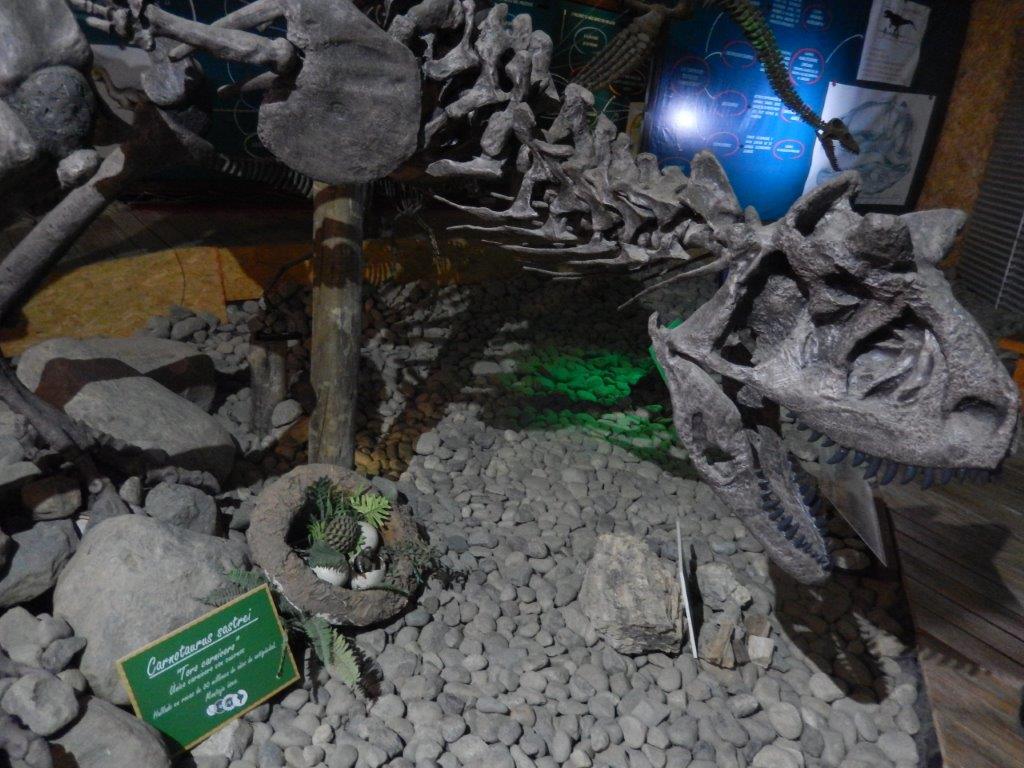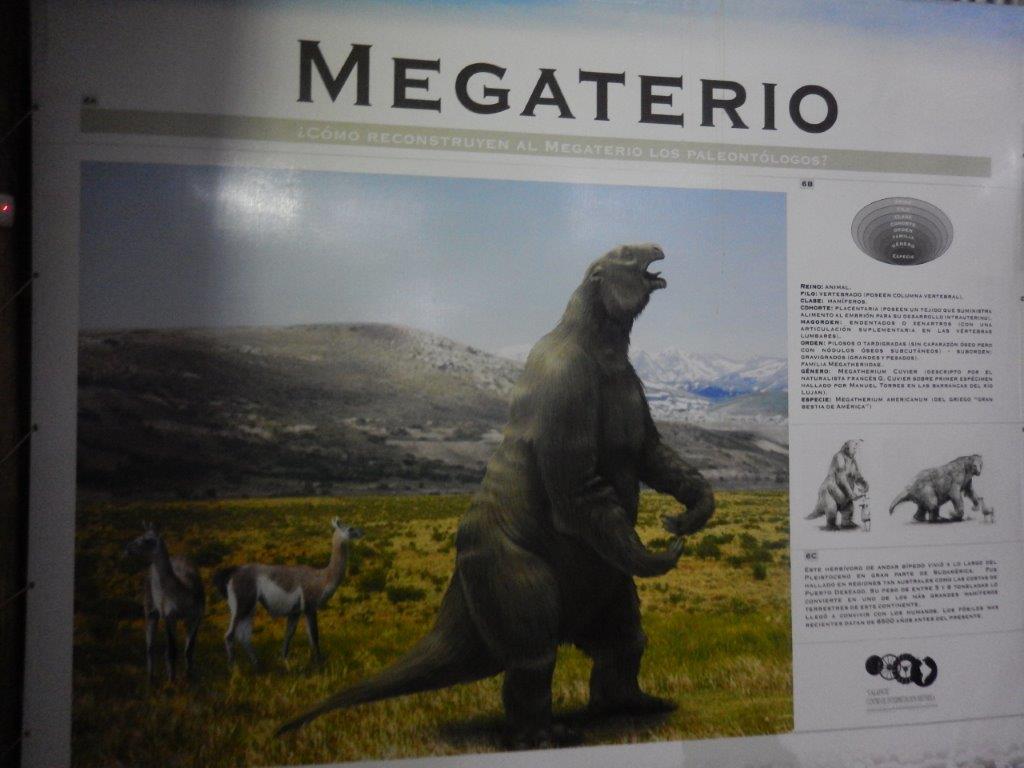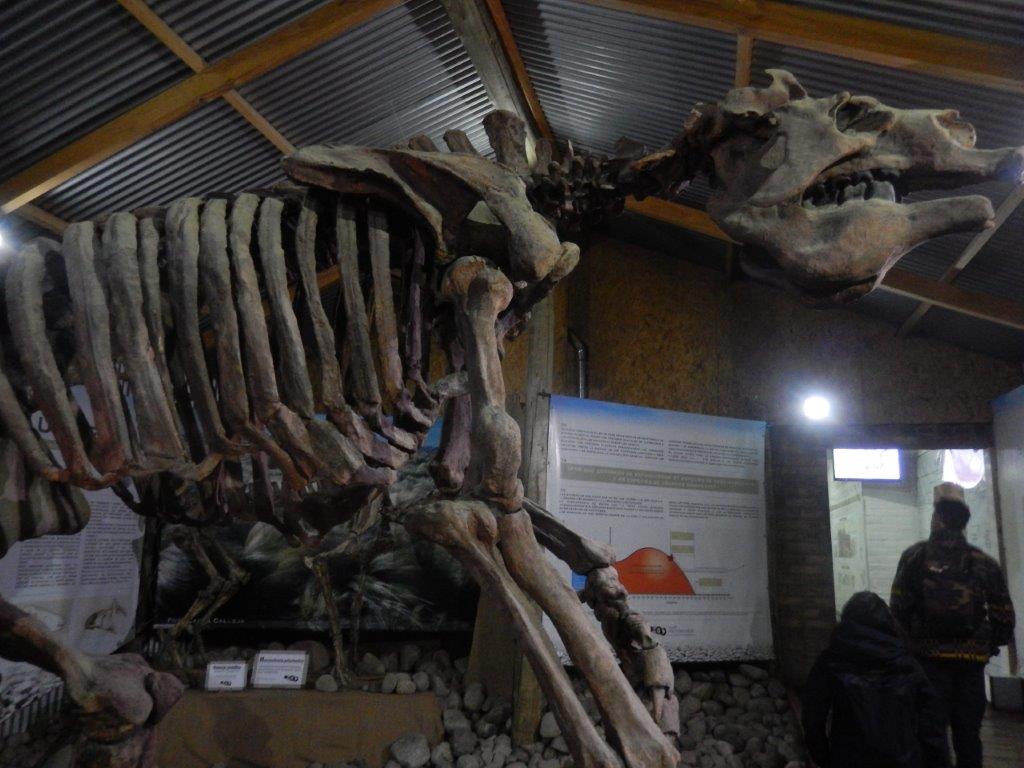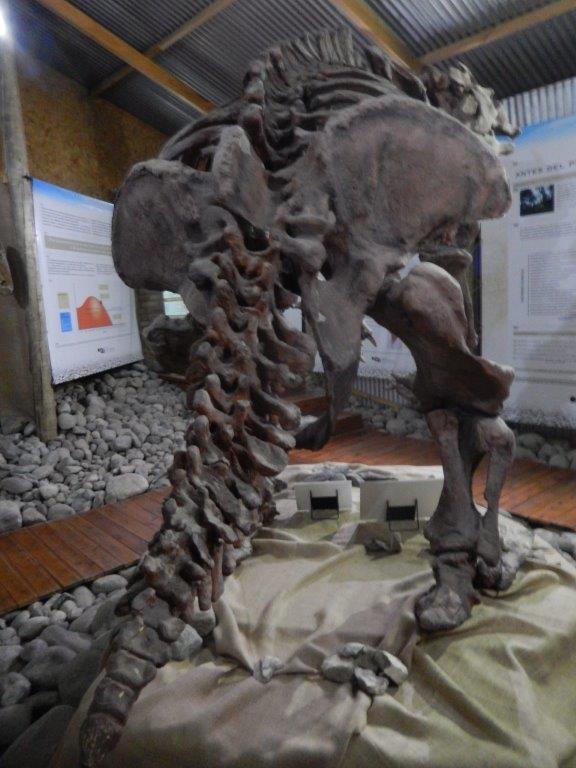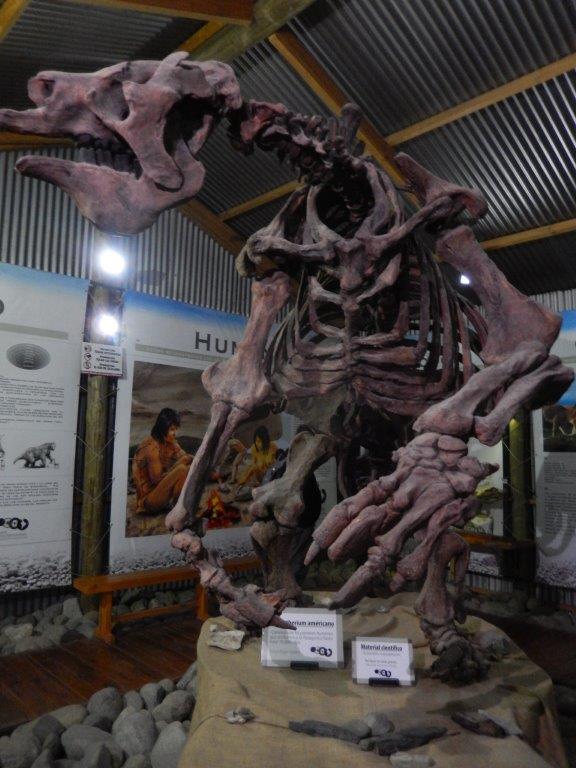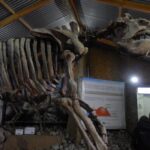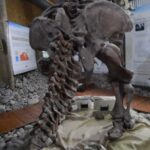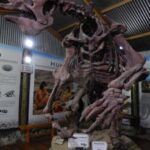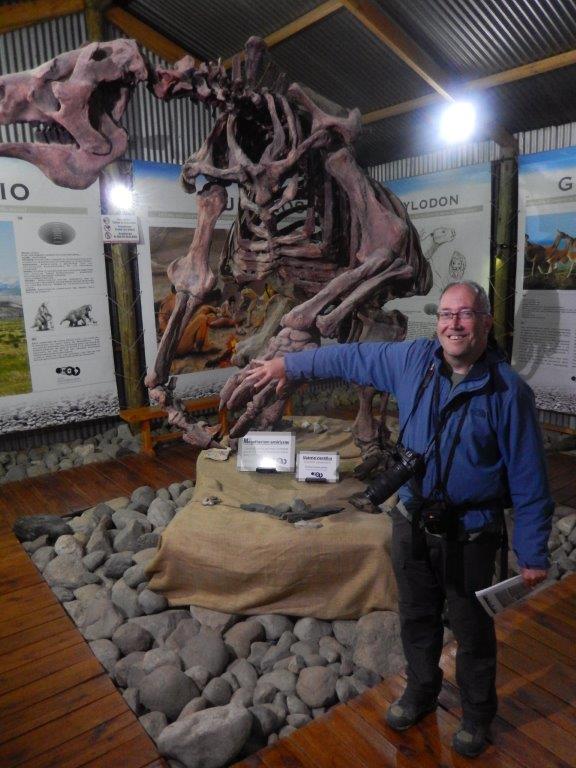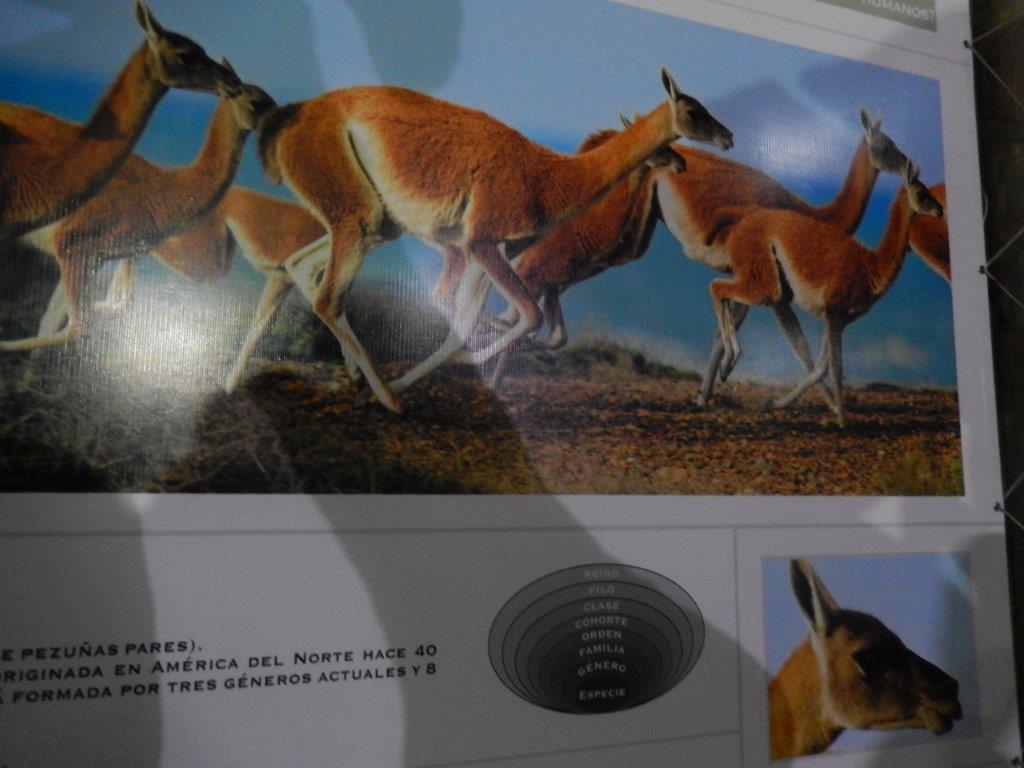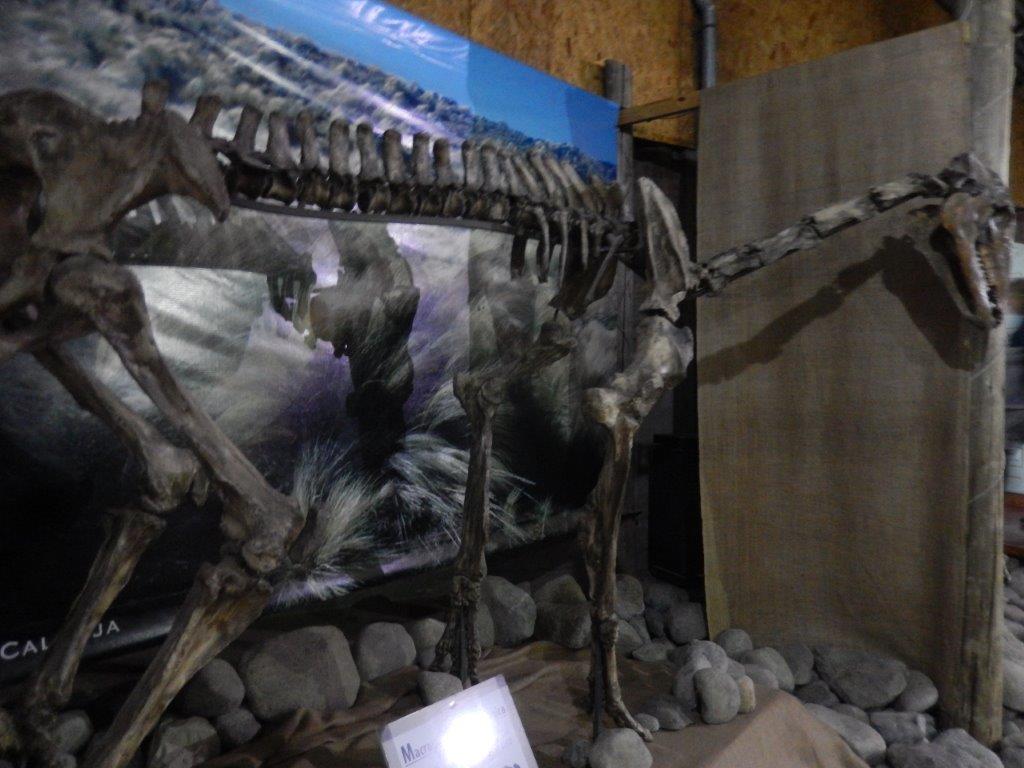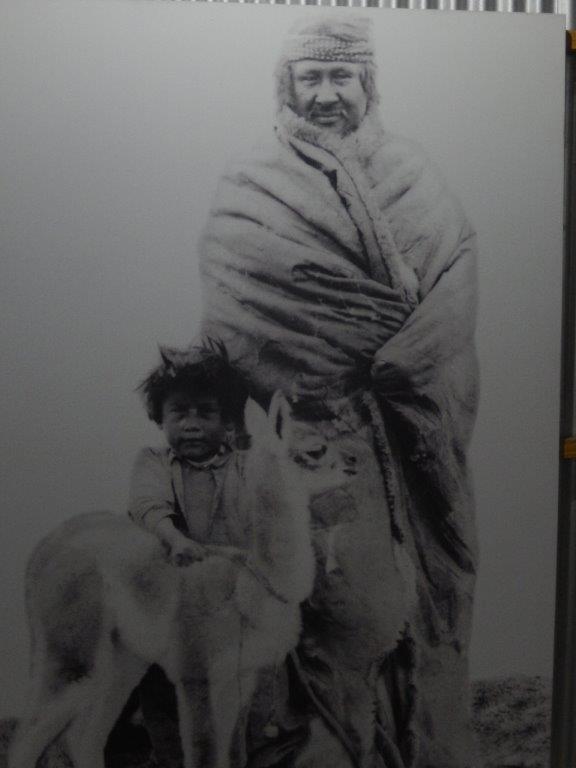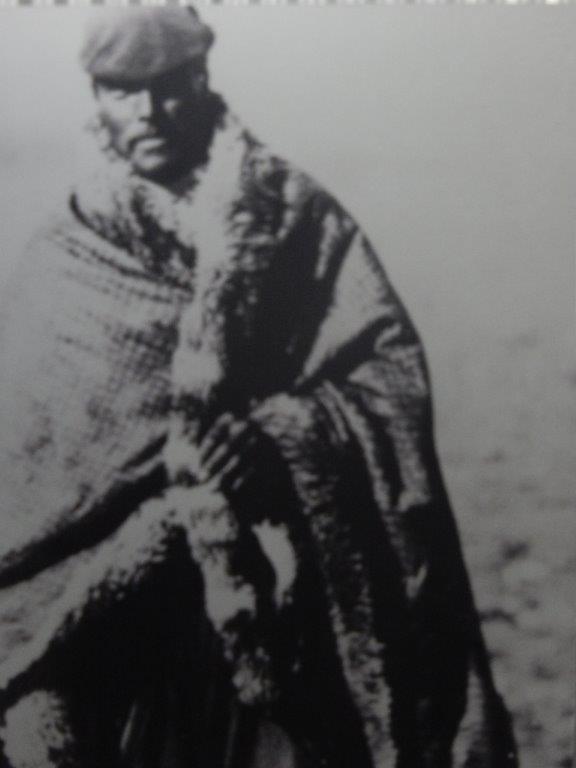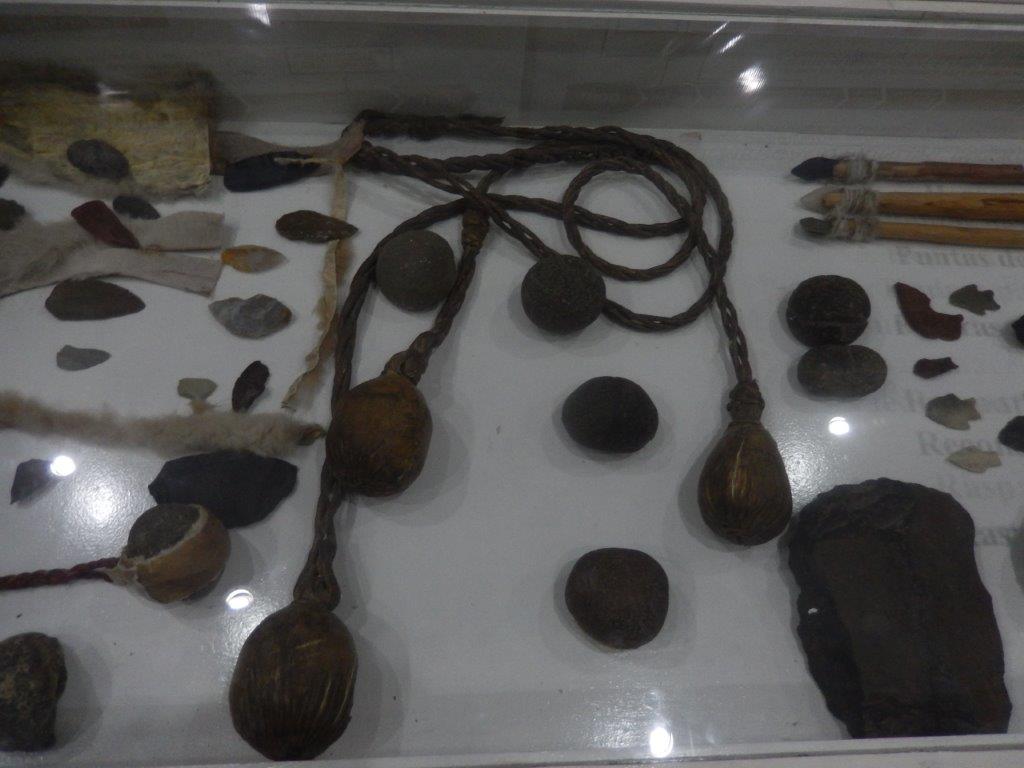37. Argentina: El Calafate Historical Interpretation Center
After the beautiful walk through the Reserva Laguna Nimez, there was still plenty of time for a visit to the
El Calafate Historical Interpretation Center
The museum begins 100 million years ago in time and it has incorporated mega mammals and dinosaur skeletons, unique in the area.
The educational tour has been strategically set up to introduce visitors into the history of southern Patagonia ever since its very formation. Through the timelines presented on panels both in Spanish and English, posters with drawings and photographs, enlarged pictures, object, tools and replicas, as well as sound accounts that complete the itinerary, you’ll cross fourteen thousand years of human and environmental history.
Patagonia Dino Country
Unenlagiinae
Unenlagiinae is a subfamily of long-snouted paravian theropods. They are traditionally considered to be members of Dromaeosauridae, though some authors place them into their own family, Unenlagiidae, alongside the subfamily Halszkaraptorinae. Unenlagiines are known from South America, with possible unenlagiines being known from North America, Madagascar, Europe, and even Australia.
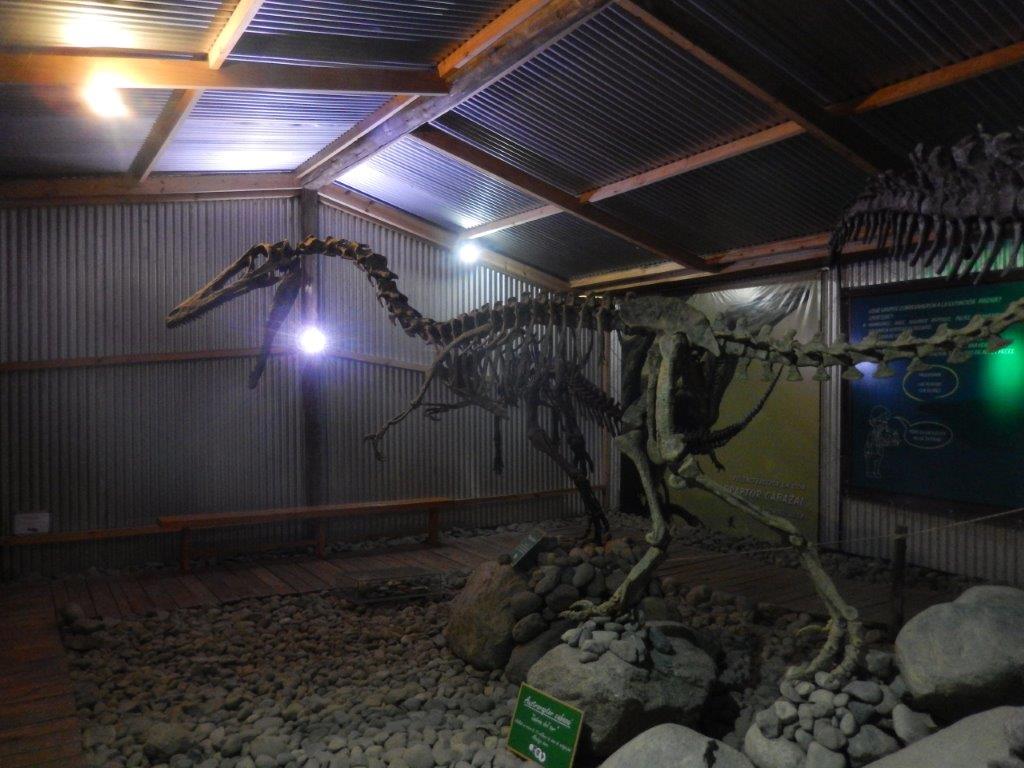 Most unenlagiines have been discovered in Argentina. The largest was Austroraptor, which measured up to 5–6 m (16.4–19.7 ft) in length, making it also one of the largest dromaeosaurids. The subfamily is distinguished from other dromaeosaurids by a tail stiffened by lengthy chevrons and superior processes, a reduced second pedal ungual, a posteriorly oriented pubis and very elongated snouts. Unenlagiines also had elongated, slender hindlimbs with a subarctometatarsalian metatarsus, which is characterized by the pinched metatarsal III at the upper end. Their distinct anatomy from Laurasian dromaeosaurids was likely a consequence of the breakup of Pangaea into Gondwana and Laurasia, where the geological isolation of unenlagiines from their relatives resulted in allopatric speciation.
Most unenlagiines have been discovered in Argentina. The largest was Austroraptor, which measured up to 5–6 m (16.4–19.7 ft) in length, making it also one of the largest dromaeosaurids. The subfamily is distinguished from other dromaeosaurids by a tail stiffened by lengthy chevrons and superior processes, a reduced second pedal ungual, a posteriorly oriented pubis and very elongated snouts. Unenlagiines also had elongated, slender hindlimbs with a subarctometatarsalian metatarsus, which is characterized by the pinched metatarsal III at the upper end. Their distinct anatomy from Laurasian dromaeosaurids was likely a consequence of the breakup of Pangaea into Gondwana and Laurasia, where the geological isolation of unenlagiines from their relatives resulted in allopatric speciation.
Carnotaurus Sastrei
Carnotaurus (=’meat bull’) is a genus of theropod dinosaur that lived in South America during the Late Cretaceous period, probably sometime between 71 and 69 million years ago. The only species is Carnotaurus sastrei. Known from a single well-preserved skeleton, it is one of the best-understood theropods from the Southern Hemisphere. The skeleton, found in 1984, was uncovered in the Chubut Province of Argentina from rocks of the La Colonia Formation. Carnotaurus is a derived member of the Abelisauridae, a group of large theropods that occupied the large predatorial niche in the southern landmasses of Gondwana during the late Cretaceous. Within the Abelisauridae, the genus is often considered a member of the Brachyrostra, a clade of short-snouted forms restricted to South America.
Carnotaurus was a lightly built, bipedal predator, measuring 7.5 to 8 m (24.6 to 26.2 ft) in length and weighing 1.3–2.1 metric tons (1.4–2.3 short tons; 1.3–2.1 long tons). As a theropod, Carnotaurus was highly specialized and distinctive. It had thick horns above the eyes, a feature unseen in all other carnivorous dinosaurs, and a very deep skull sitting on a muscular neck. Carnotaurus was further characterized by small, vestigial forelimbs and long, slender hind limbs. The skeleton is preserved with extensive skin impressions, showing a mosaic of small, non-overlapping scales approximately 5 mm in diameter. The mosaic was interrupted by large bumps that lined the sides of the animal, and there are no hints of feathers.
The distinctive horns and the muscular neck may have been used in fighting conspecifics. According to separate studies, rivaling individuals may have combated each other with quick head blows, by slow pushes with the upper sides of their skulls, or by ramming each other head-on, using their horns as shock absorbers. The feeding habits of Carnotaurus remain unclear: some studies suggested the animal was able to hunt down very large prey such as sauropods, while other studies found it preyed mainly on relatively small animals. Its brain cavity suggests an acute sense of smell, while hearing and sight were less well developed. Carnotaurus was probably well adapted for running and was possibly one of the fastest large theropods.
The Wandelgek took his time and leisurely walked through this wonderful exhibition which truely amazed him on several occasions.
Tyrannosaurus
What the Tyranosaurus is doing here is a small riddle because there is no concluding evidence yet of a Tyrannosaurus being found in south america. But hey, it is an eye catcher…
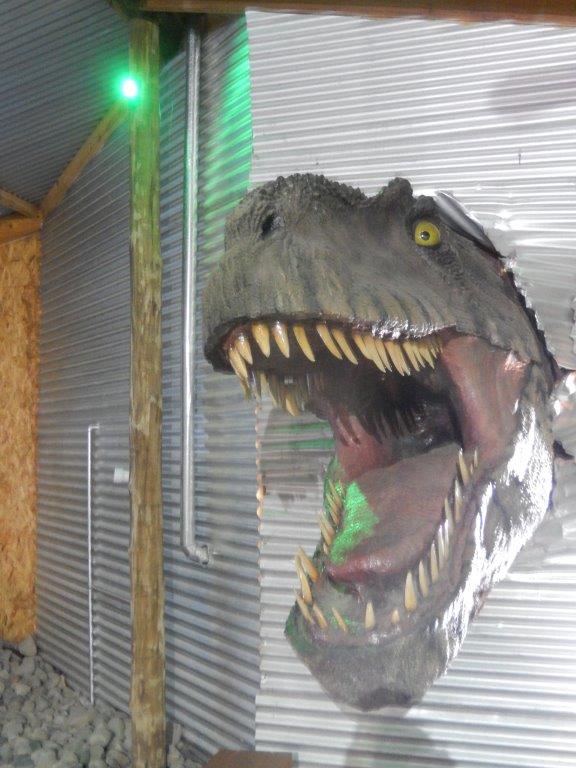 This is an educational museum, which includes timelines, giant charts, illustrated walls, as well as historical objects, utensils, and replicas. The texts, written and audio, are in both English and Spanish.
This is an educational museum, which includes timelines, giant charts, illustrated walls, as well as historical objects, utensils, and replicas. The texts, written and audio, are in both English and Spanish.
Plesiosaurus
Plesiosaurus (Greek: πλησίος (plesios), near to + σαῦρος (sauros), lizard) is a genus of extinct, large marine sauropterygian reptile that lived during the Early Jurassic. It is known by nearly complete skeletons from the Lias of England. It is distinguishable by its small head, long and slender neck, broad turtle-like body, a short tail, and two pairs of large, elongated paddles. It lends its name to the order Plesiosauria, of which it is an early, but fairly typical member. It contains only one species, the type, Plesiosaurus dolichodeirus. Other species once assigned to this genus, including P. brachypterygius, P. guilielmiimperatoris, and P. tournemirensis have been reassigned to new genera, such as Hydrorion, Seeleyosaurus and Occitanosaurus.
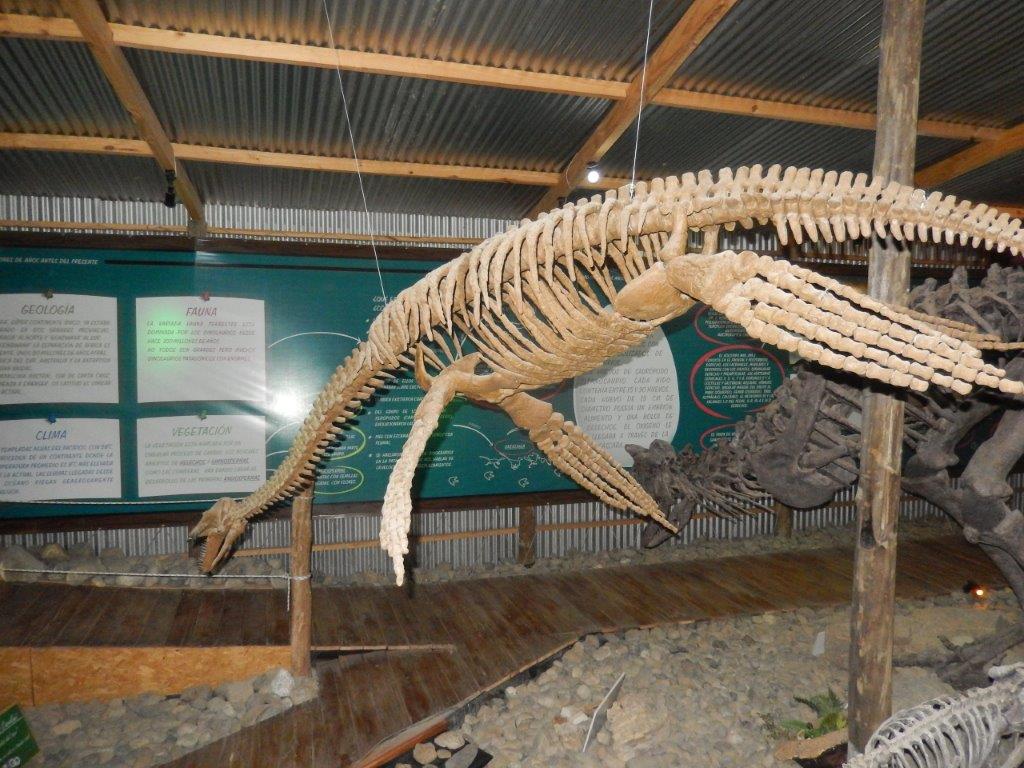 The exhibition covers the end of the ice age, prehistoric art, the tools, weapons, spiritual and material life of the Aonikenk people, the arrival of the Europeans, and the settlement of Patagonia, including that of El Calafate.
The exhibition covers the end of the ice age, prehistoric art, the tools, weapons, spiritual and material life of the Aonikenk people, the arrival of the Europeans, and the settlement of Patagonia, including that of El Calafate.
Patagonia: Mega Mammal country
The glacier processes and ecological transformations that took place during the Pleistocene, the mega fauna and cave paintings faithfully reflect pre-historic Patagonia.
Megatherium/Megaterio
Megatherium (from Greek méga (μέγα) ‘great’ + theríon (θηρίον) ‘beast’) is an extinct genus of ground sloths endemic to South America that lived from the Early Pliocene through the end of the Pleistocene. It is best known for the elephant-sized type species M. americanum, sometimes known as the giant ground sloth, or the megathere, native to the Pampas through southern Bolivia during the Pleistocene. Various other smaller species belonging to the subgenus Pseudomegatherium are known from the Andes.
Megatherium is part of the sloth family Megatheriidae, which also includes the similarly giant Eremotherium, comparable in size to M. americanum, which was native to tropical South America, Central America and North America as far north as the southern United States. Megatherium was first discovered in 1788 on the bank of the Luján River in Argentina.
As a very large Human, who hunts and eats Guanaco too, The Wandelgek naturally had to shake hands with his colleague 😉🤣
Megatherium actually looked a bit like a very old. bend over man, in need ofva walking stick or a helping hand to cross the street😆.
The holotype specimen was then shipped to Spain the following year wherein it caught the attention of the paleontologist Georges Cuvier, who was the first to determine, by means of comparative anatomy, that Megatherium was a sloth. Megatherium became extinct around 12,000 years ago as part of the Late Pleistocene extinctions, simultaneously with the majority of other large mammals in the Americas. The extinctions followed the first arrival of humans in the Americas, and one and potentially multiple kill sites where M. americanum was slaughtered and butchered is known, suggesting that hunting could have caused its extinction.
Hemiauchenia
Beneath is a picture of a Hemiauchenia, a possible prey of the Megatherium, This animal looked like a gigantic ancestor of the Guanaco (almost twice the size of a Guanaco), which currently roamed over the Patagonian steppes.
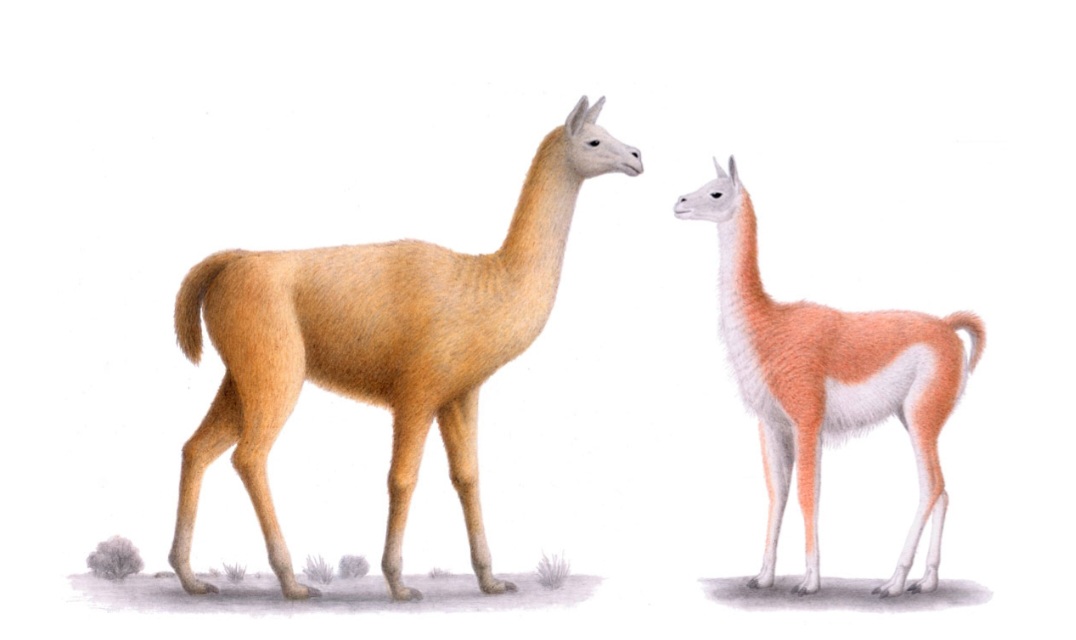 Hemiauchenia is a genus of laminoid camelids that evolved in North America in the Miocene period about 10 million years ago. This genus diversified and expanded into to South America in the Late Pliocene approximately 3 to 2 million years ago, as part of the Great American Biotic Interchange. The genus became extinct at the end of the Pleistocene. The monophyly of the genus has been considered questionable, with phylogenetic analyses finding the genus to paraphyletic or polyphyletic, with some species suggested to be more closely related to living lamines than to other Hemiaucenia species.
Hemiauchenia is a genus of laminoid camelids that evolved in North America in the Miocene period about 10 million years ago. This genus diversified and expanded into to South America in the Late Pliocene approximately 3 to 2 million years ago, as part of the Great American Biotic Interchange. The genus became extinct at the end of the Pleistocene. The monophyly of the genus has been considered questionable, with phylogenetic analyses finding the genus to paraphyletic or polyphyletic, with some species suggested to be more closely related to living lamines than to other Hemiaucenia species.
Beneath a skeleton ….
Indigenous people
After the section with the giant models of long extinct animals, there was a section about the original inhabitants of the area.
The Wandelgek loved the photographs which not only showed how these people were dressed but also how hard life must have been in those days, specially in winter, on the Patagonian steppes.
Boleadores
ln this museum The Wandelgek found a very old, authentic pair of boleadores, which he had first seen during a tango show in Buenos Aires…
Bolas or bolases (singular bola; from Spanish and Portuguese bola, “ball”, also known as a boleadora or boleadeira) is a type of throwing weapon made of weights on the ends of interconnected cords, used to capture animals by entangling their legs. Bolas were most famously used by the gauchos, but have been found in excavations of Pre-Columbian settlements, especially in Patagonia, where indigenous peoples (particularly the Tehuelche) used them to catch 200-pound guanacos and rheas. The Mapuche and the Inca army used them in battle. Mapuche warriors used bolas in their confrontations with the Chilean Army during the Occupation of Araucanía (1861–1883).
After this very interesting museum visit, The Wandelgek decided to go shopping…

